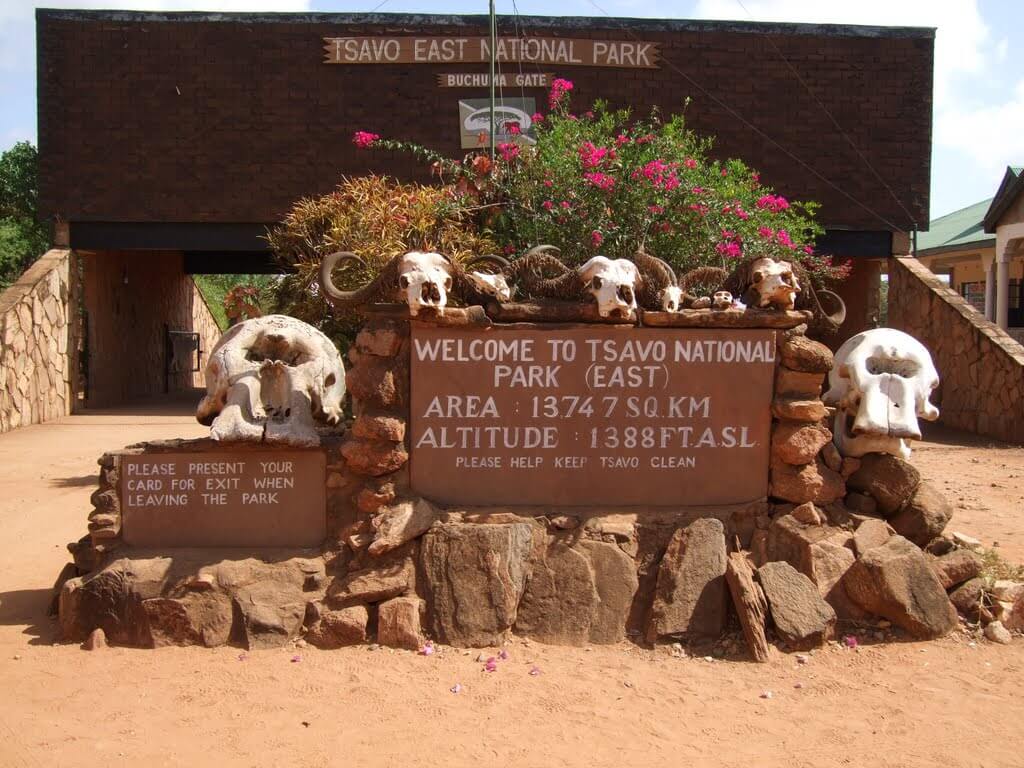
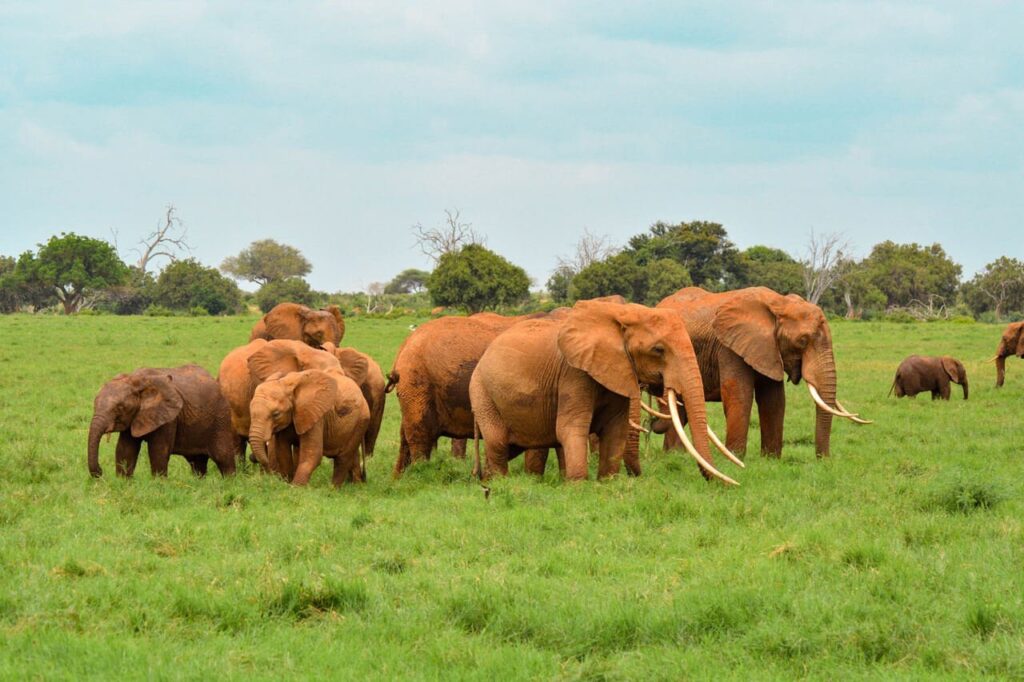

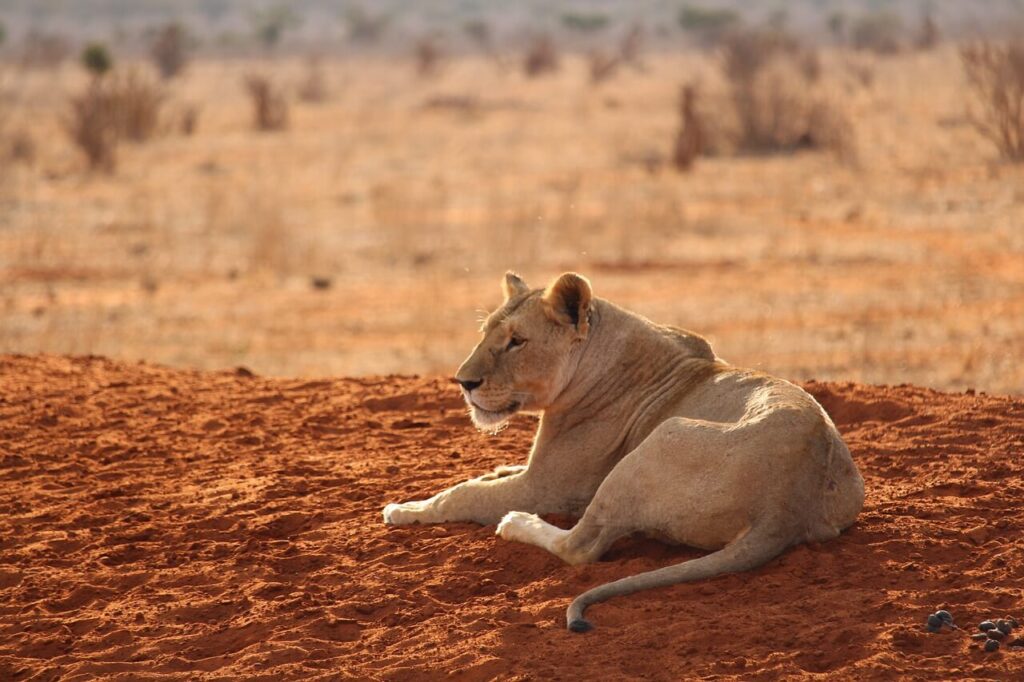
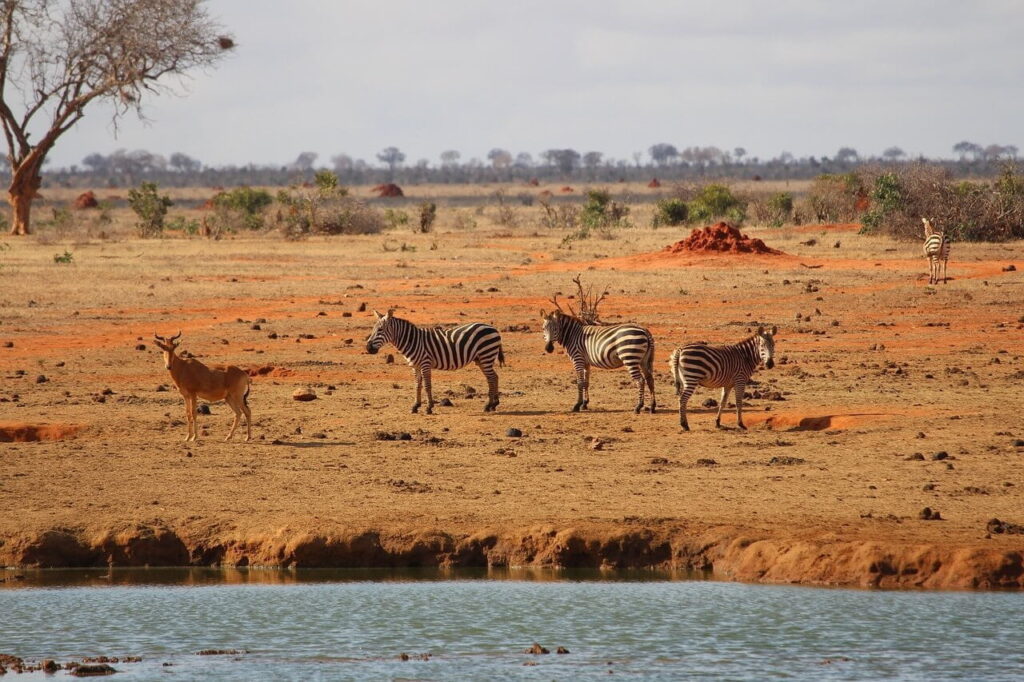

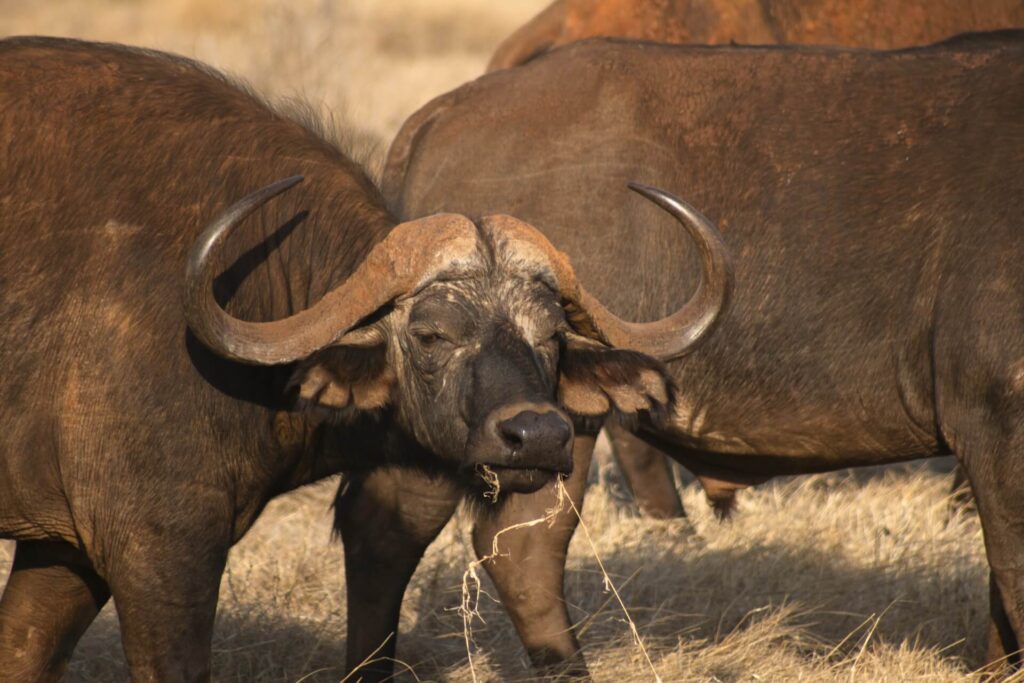

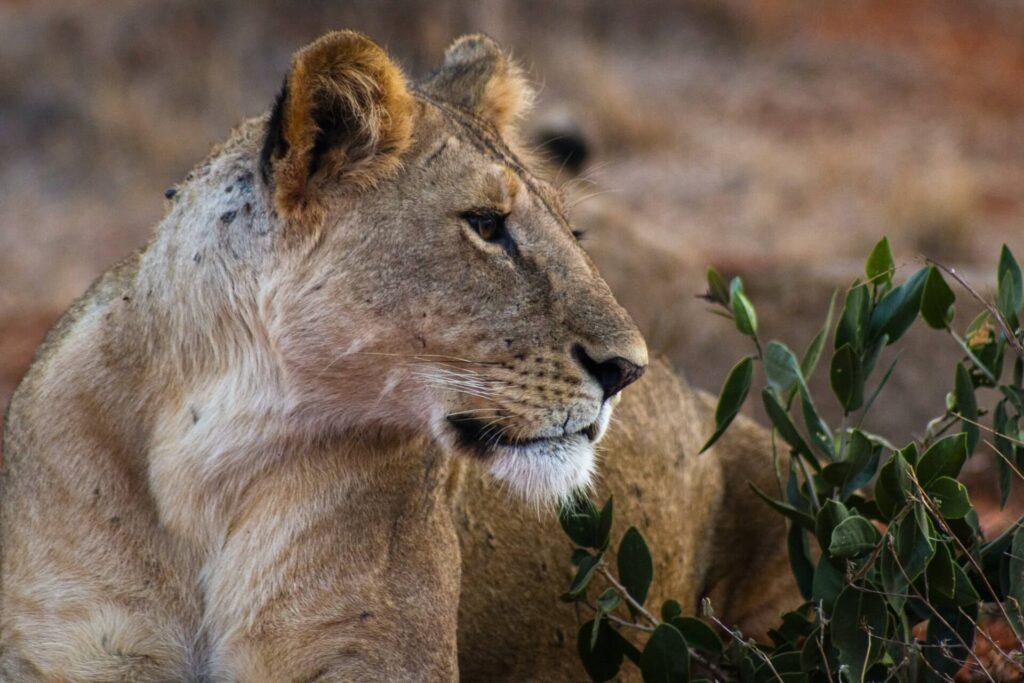
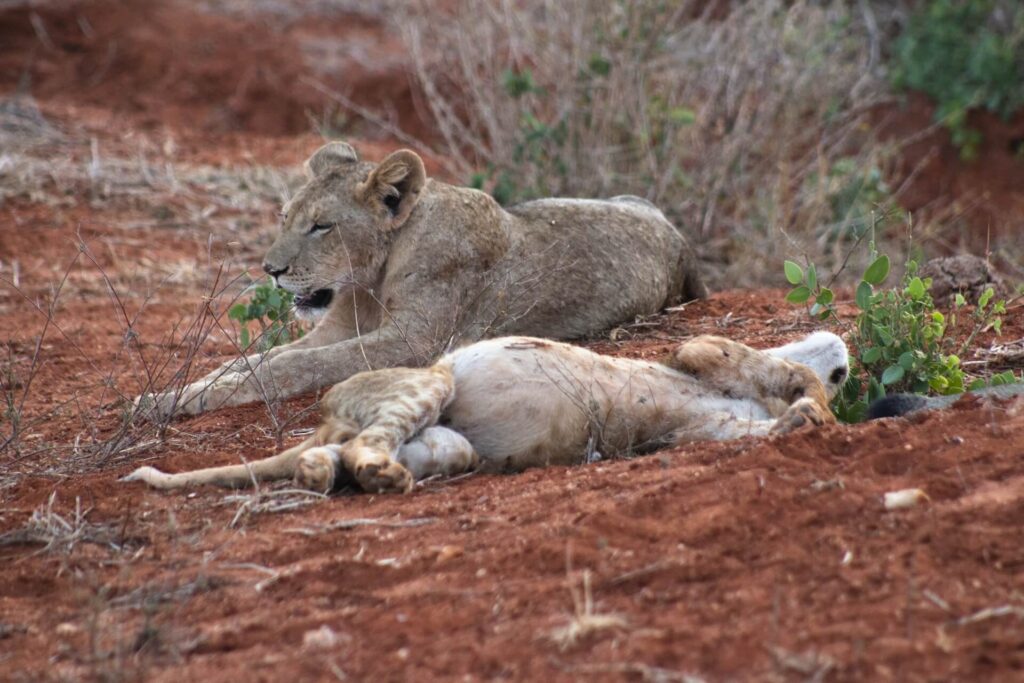
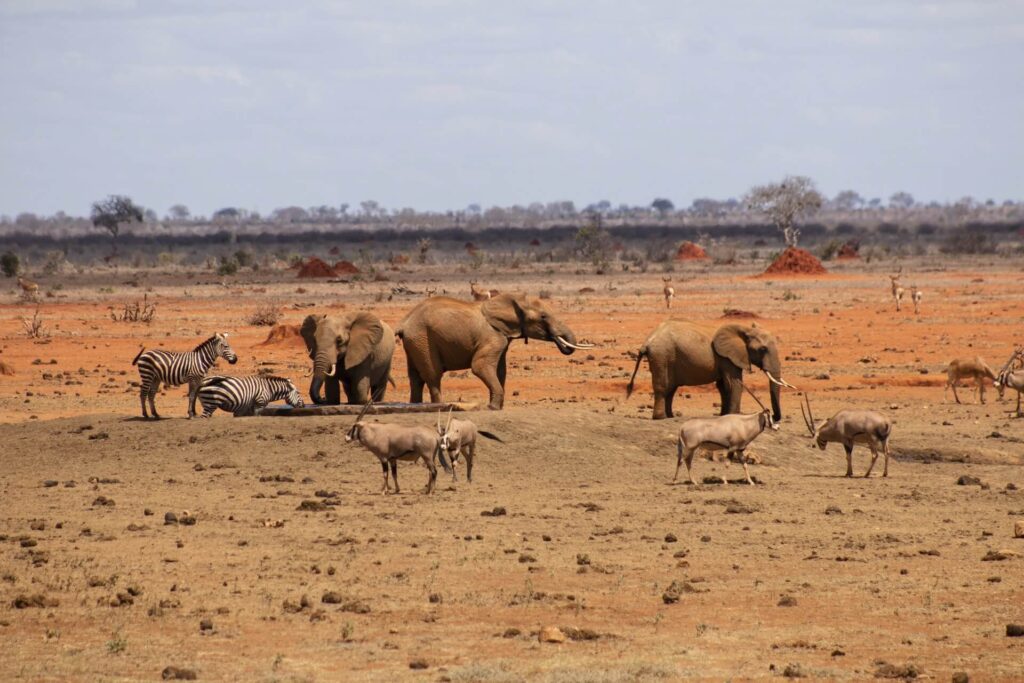
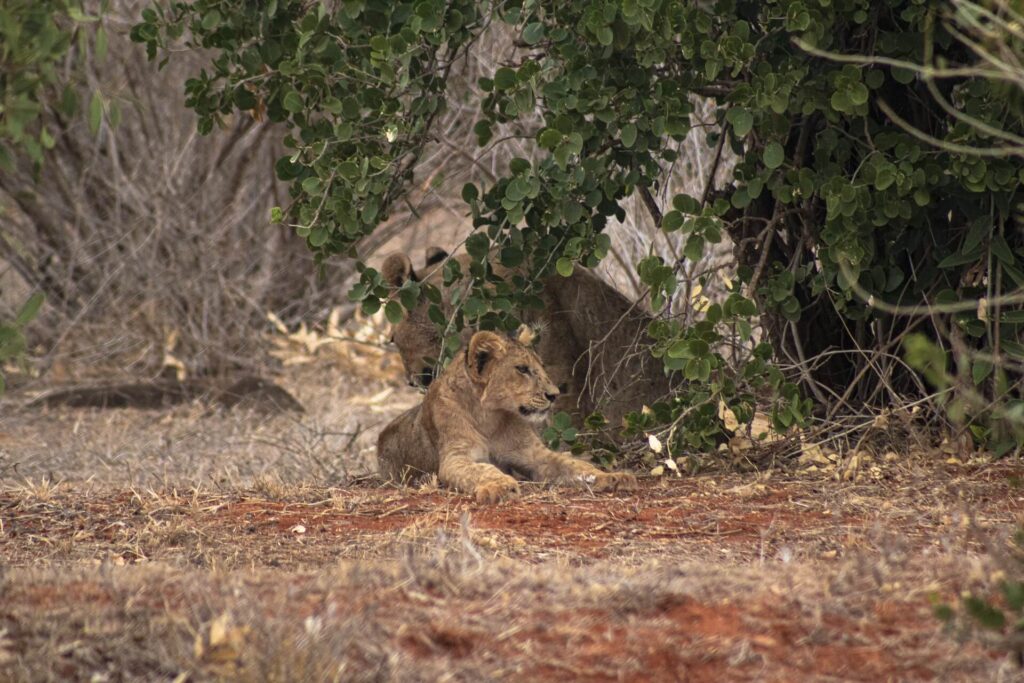
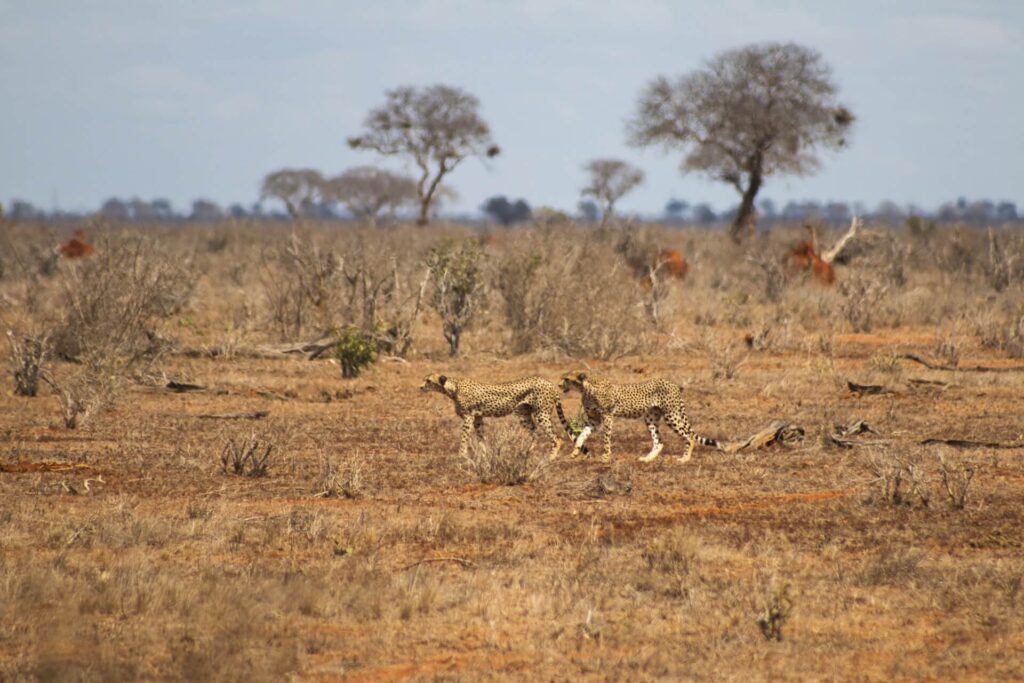
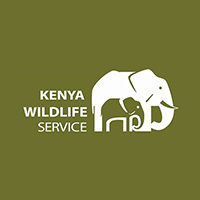
Affiliate Disclosure: This listing may contain affiliate links. If you click through and book a tour, I may earn a small commission at no extra cost to you.
Tsavo East National Park, Kenya’s largest national park, is a land of wild beauty and untamed charm. Covering 13,747 sq. km, it forms part of the vast Tsavo ecosystem together with Tsavo West National Park. Combined, the two parks make up one of the largest protected wilderness areas in the world, spanning 4% of Kenya’s total land area.
Tsavo East lies to the east of the Nairobi–Mombasa highway, equidistant between Nairobi and Mombasa. With its sweeping savannahs, sparse vegetation, and dramatic landscapes shaped by lava flows and rivers, the park is a premier destination for wildlife safaris. The meandering Galana River cuts across the arid plains, bringing life to the park and creating breathtaking contrasts of emerald green against dusty red earth.
Unlike the rugged terrain of Tsavo West, Tsavo East is flatter and drier, making it easier to spot wildlife. It is famously home to large herds of dust-red elephants, often seen bathing in the red soils of the park.
Tsavo East is home to most of Africa’s iconic wildlife, including:
Tsavo East is famous for its large herds of dust-red elephants, the Yatta Plateau lava flow, and the spectacular Lugard Falls.
The dry seasons (June–October and January–February) are the best for game viewing, as wildlife gathers around water sources.
Yes. Tsavo East offers a variety of accommodations, from luxury safari lodges to tented camps. Options range from Aruba Ashnil Lodge near Aruba Dam to budget camps near Voi Gate.
Yes. Tsavo East is safe for visitors when inside designated safari vehicles and lodges. Always follow park and guide instructions.
Tsavo East National Park has received 0 reviews with an average rating of 0 out of 5
Please log in or create an account to leave a review.
Update your info, boost visibility, and connect with more customers!
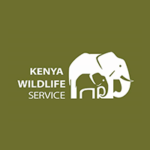

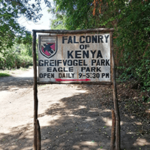
No results available